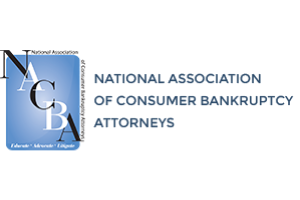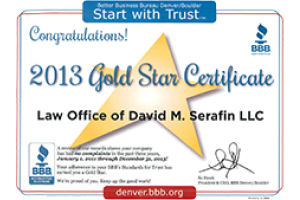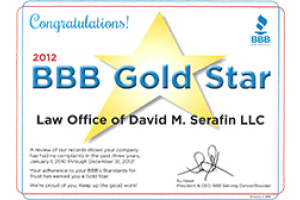Re-Opening a Bankruptcy Case as per Section 350(b)
December 17, 2011
This past week, I came across a case which can be described as the defining reason why you should hire an experienced Denver bankruptcy lawyer, particularly with a tax background. My just retained client – struggling with overwhelming debt and looking to eliminate the stress of addressing creditors – filed for chapter 7 back in 2008. All of her unsecured debt was eliminated and most of the creditor harassment stopped but the IRS continues to garnish her wages and claims that, with accruing interest and penalties – a $30,000 debt for the 2000 tax now (staggeringly) stands at over $76,000.
This problem could have been avoided had previous counsel listed the otherwise dischargeable tax debt as unsecured on Schedule F. A local court decision even determined that an unlisted debt will still be discharged in a “no asset” case – whereby the chapter 7 trustee filed a Report of No Distribution and decides that the debtor has no unprotected property to collect from the debtor on behalf of unsecured creditors. But, because the bankruptcy exemptions did not protect all of the debtor’s property, the trustee opened a bankruptcy estate. As such, the tax debt was not discharged and, in the meantime, the IRS has seized multiple years of tax refunds, garnished wages and put a lien on my client’s house.
Over three years later, my client has asked me to file a Motion to Re-Open the chapter 7 case so that we can amend the schedules to include the old tax debt. (The statute of limitations for IRS collections is 10 years but unrelated intervening events – namely the filing of multiple Offers in Compromise – have extended this time period by several years.)
Due to the high amount of tax debt re-assessed by the IRS, the stakes are high. If the Motion to Re-Open is denied, my client (who no longer passes the chapter 7 Means Test) would need to pay back the tax debt (albeit without additional interest or penalties) over five years in a chapter 13 re-organization.
A case can be re-opened by the debtor, trustee or a creditor in interest. The granting of Section 350(b) relief after discharge and the case is closed is only accorded to parties acting in good faith and is discretionary with the Colorado Bankruptcy Court. A debtor may want to re-open the case to include debts inadvertently omitted from the bankruptcy schedules and to stop creditor harassment. Conversely, should the bankruptcy trustee or a creditor believe that the debtor lied or intentionally omitted material information on the schedules or Statement of Financial Affairs, the trustee or creditor can seek a re-opening of the case and even move to revoke the debtor’s discharge. Or the trustee may ask to re-open the case to re-administer the bankruptcy estate to account for non-exempt property acquired (or the right to receive triggered) within 180 days after filing, such as an inheritance, life insurance payment or divorce settlement.’
With the exception of the one year deadline after discharge for the trustee or a creditor to file a Motion to Revoke Discharge, there is no time limit upon the filing of a Motion to Re-Open a bankruptcy case. The filing fee for a Motion to Re-Open is $260 in Colorado.
As a Lakewood debt relief agency which provides bankruptcy help to wipe away debt, the Law Office of David M. Serafin will advise as to your options when attempting to re-open a bankruptcy matter.





